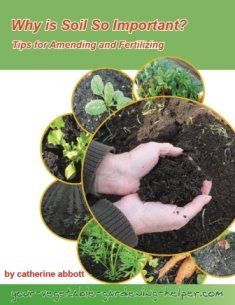Building a Vegetable Garden
Growing and building a vegetable garden is my passion and now I have the summer to create one. My Mom was an avid gardener out of neccessity and hopefully choice and now I am rejuvenating her old garden site. When I was growing up she grew all our vegetables, for fresh eating, freezing and canning for the long winter months. She grew on a huge garden and at it's biggest is was probably about a 1/2 acre site. This garden site has not been used in over a decade. I now live part time on this property and my goal is to rejuvenate the site.
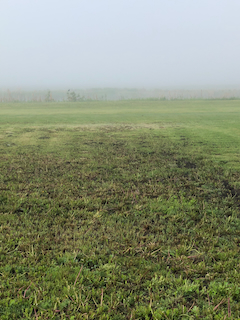 Rejuventing and my Mom's old garden site
Rejuventing and my Mom's old garden siteThe area has become a mix of grass, weeds and dandelions. I hadn't been gardening much myself the last few years so decided to start small. This I think is good advice for a beginner gardener, start small and increase your garden size as you gain confidence. It takes time to learn about your soil, how much work is involved and what veggies grow best in your site.
First thing I had to do was combat all the weeds. I decided in my first year I would do a small lasagana garden to see how that worked for me. A lasagna garden is a layered gardening technique that mimics the layers of lasagna. It starts with a layer of cardboard or newspaper to smother weeks, foloowed by alternating layers of organic materials like grass clippings, leaves, compost, and soil. These layers decompose over time, creating nutrient-rick soil for planting. It's an efficient and eco-friendly way to build soil and grow healthy plants without tilling.
Layers to Building my Vegetable Garden
1. Laid down Cardboard
First I layed down cardboard creating 4 beds, each 3 feet by 8 feet with pathways in between. I have grown in raised beds this approximate size in previous gardens so felt comfortable with these measurements. Three feet is not too wide so I canreach across the bed and eight feet is long enough to get a few decent rows of veggies. I got the cardboard from our local recycling depot.
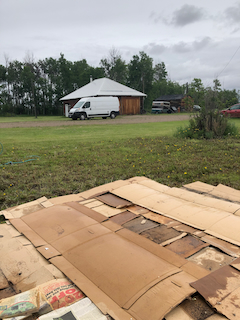 Cardboard layer for Lasagna Garden
Cardboard layer for Lasagna GardenThe cardboard acts as a barrier to smother weeds by blocking sunlight and preventing them from growing through. As it decomposes, cardboard also adds organic matter to the soil, improving its structure and promoting microbial activity. Additionally, cardboard can help retain moisture in the soil and provide insulation for plant roots during hot or cold weather. Overall, using cardboard in a garden bed can help create a healthy and productive growing environment.
2. Added a layer of Soil
During this garden site rejuvenation I was also cleaning out my Mom's old greenhouse. In the greenhouse there was a raised bed that had not been used for years and it needed to be removed. I moved the soil making it the first layer on the cardboard for my lasagna garden. I had enough to add about 3 inches to each area.
Adding old soil to a garden bed can be beneficial depending on its quality and condition. It the soil is nutrient-rich, well-draining, and free of contaminants or diseases, incorportaing it into the garden bed can improve soil structue and fertility. The soil probably didn't have much nutrients in it, but would help with drainage and organic methods were previously used in the old greenhouse.
3. Added a layer of Grass Clippings
Next layer was grass clippings. The farm has a huge grass area that is mowed on a regular basis. The grass was collected and put in a pile. The pile had grown over the years so now was the perfect time for it to be used. Wheelbarrow at at time I layed down about 6 inches of old bown grass clippings to each bed.
Brown grass clippings can be beneficial for soil health. They add organice matter to the soil, which improves its structure, helps retain moisture and provides essential nutrients as it decomposes. However, it is essential to balance brown grass clippings with green ones or other nitrogen-rich materials to avoid nitrogen depletion in the soil. I figured my other layers to make this layer work.
4. Next layer was Ash
I was trying to find organic matter around the farm to use in my lasagna garden beds. The old garage had a wood stove for heat so there was a huge bucket full of ash. All the wood was harvested from the farm so it was perfect next layer. I added only a thin dusting to each bed as too much ash is not neccessarily good for vegetables.
Ash is a good soil amendment in certain situations. Wood ash contains potassium, phosphorus and calcium caronate, which can help raise soil pH levels, making it more alkaline. However, it's essential to use ash sparingly, as excessive amounts can harm plants by raising the pH too much. Additionally, ash should only be used from clean sources.
5. Layer of Fertilizer for Building a Vegetable Garden
Next I added some fertilizers to the beds. Knowing the old soil, grass clipping and ash didn't offer much for fertiziling the beds I decided to add in some. I added a few handfuls of all three to each of the beds; blood meal for nitrogen, rock phosphate and bone meal for phoshorus.
These types of fertilizers are beneficial for the garden because they provide essential nutrients that plants need for healthy growth.
- Blood meal is high in nitrogen, which promotes vigorous leafy growth and green coloration in plants. It's particularly useful for leafy vegetables and plants that require a nitrogen boost.
- Rock phosphate is rich in phosphorus, a nutrient essential for root development, flower and fruit production, an overall plant health. Phosphorus is crucila for promoting strong root systems and adiding in energy transfer within the plant.
- Bone meal is high in phosphorus as well as calcium, which helps build strong cell walls in plants. It's especially beneficial for flowering and fruiting plants as phosphorus supports robust flower and fruit development.
By incorporating these fertilizers into the garden beds I was ensuring that the plants would receive a balanced supply of essentila nutrients, leading to healthier growth, improved yields and better overall plant health.
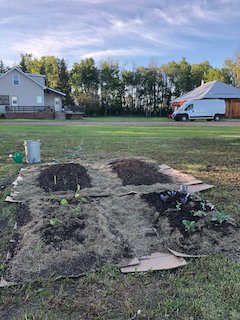 Beds ready for planting in Lasagna Garden
Beds ready for planting in Lasagna Garden6. Final layer was Aged Manure
I could not get any local aged manure so I bought 4 - 50 pound bags and spread a bag over each garden bed. Manure is an excellent organic fertilizer and soil amendments for building a vegetable garden. It provides a recih source of nutrients, including nitrogen, phosphorus and potassium, which are essential for plant growth.
Additionally, manure improves soil structure by increasing its organic matter content, enhancing water retention, and promoting beneficial microbial activity. It also helps to loosen compacted soil, making it easier for roots to penetrate and access nutrients.
However, it's essential to use well-aged manure to avoid potential issues such as weed seeds, pathogens, and excessive nitrogen that can harm plants. When used properly, manure can significantly enhance soil fertility and support healthy plant growth when building a vegetable garden.
After a week of allowing the lasagna garden to settle and decompose I started planting my vegetable. My lettuce, peas, beans and zucchini seeds were planted directly into the soil. I had started some broccoli, cabbage and cauliflower seeds in a few weeks earlier in the greenhouse so I had some lovely transplants to put in the beds. I dug a planting hole through the mulch and planted them.
How did my Garden Grow?
My lasagna garden was a success! I grew some great lettuce, peas, beans, broccoli, cauliflower, cabbage and zucchini. I am looking forward to explanding my garden site next year by adding in some row gardening beds. I regularly watered my plants and monitored for any pests or diseases. The only problem I had later in the summer was some small slugs in my lettuce.
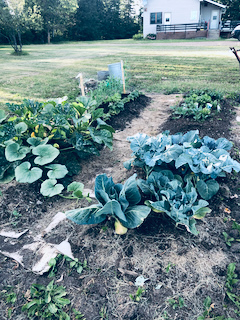 Successful Lasagna Garden
Successful Lasagna Garden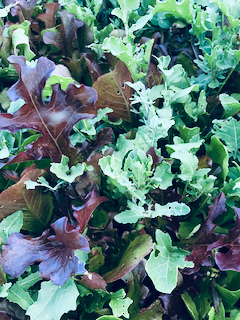 A big harvest of Lettuce all summer
A big harvest of Lettuce all summer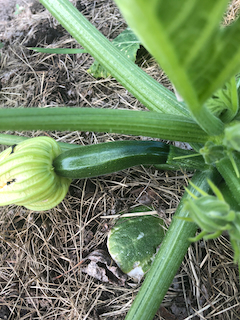 Zucchini was plentiful
Zucchini was plentifulI am so happy I was able to rejuvenate a small portion of my Mom's old garden site. It is really cool to be growing and harvesting my vegetables today on the same garden site as when I was a child. By following my steps above you to can create a nutrient-rich and productive lasagna garden that will provide a bountiful harvest of vegetables.
Return from Building a Vegetable Garden to Homepage
Recent Articles
-
Organic Gardening soil amendments - List of material?
Aug 09, 25 10:57 AM
What materials are best used as organic gardening soil amendments? -
Tips for disease control in your vegetable garden
Jul 14, 25 11:15 AM
Easy tips for disease control to keep your vegetable growing its best. -
Joy of vegetable Gardening
Jul 14, 25 11:01 AM
Everything you need to know is right here to have Joy of Vegetable Gardening




